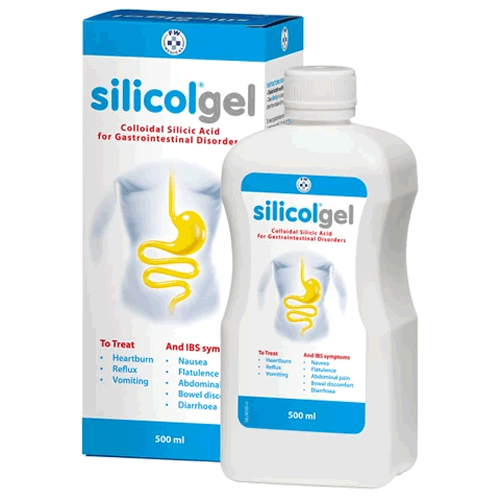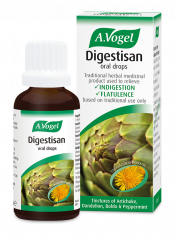What foods heal your gut?
Foods such as bone broth can help to heal your gut since they contain protein building-blocks such as collagen. Other foods such as leafy greens are not only anti-inflammatory but also contain dietary fibre which act as food for your good gut bacteria. These bacteria secrete beneficial short-chain fatty acids that can help to repair your gut.
The best gut-healthy foods
A number of foods can help to repair your gut and keep it healthy:
1. Bone broth
Slow cooking a broth using bones (the bigger, the better!) is well-known to help promote healing in the gut. A well-cooked bone broth becomes rich in collagen which is rich in amino acids and these are the building blocks for physical repair work around the body.
See, your gut needs to have strong 'gap-junctions' in order to absorb nutrients but not unwanted larger particles of food that could risk over-stimulating your immune system. Research has shown that a good dose of collagen in your diet can help to repair damage to these important tight junctions. (1)
However, if making a batch of bone broth isn't your thing, why not benefit from Silicol Gel instead. This can also help to reduce inflammation and create a protective layer throughout the length of the digestive tract.
2. Oily fish
Oily fish is the next ingredient on my list if you're keen to join the quest in healing your gut. Oily fish is beneficial for a number of reasons. Firstly, omega-3 is extremely anti-inflammatory and can, therefore, help to heal and ward off the damaging effects of excess inflammation.
Oily fish are also a good source of vitamin D, another anti-inflammatory agent. Plus, if you opt for small fish with the bones still in them, you'll get an extra dose of calcium plus collagen – all extra-nourishing!
Finally, human and animal studies have highlighted the ability of omega-3 polyunsaturated fatty acids (PUFAs) to positively influence the balance of bacteria in your gut. These bacteria produce beneficial short-chain fatty acids, such as butyrate, which helps to inhibit the growth of damaging pathogens. They also maintain the health of the intestinal lining and can help to repair existing damage in this area. (2)
3. Bitter herbs
Nowadays, in a typical Western-style diet many of the bitter elements of our diet have been lost and instead, there are more copious sweet or salty elements. However, bitter tastes, including bitter herbs such as dandelion, for example, have an important role in helping to stimulate your own natural balance of gastric secretions. In turn, sufficient gastric secretions help to support the balance of bacteria throughout the gut and help to prevent bad bacteria such as H.pylori from damaging the lining of the stomach and beyond.
4. Healthy fats
I've already touched on the health benefits of omega-3 but healthy fats, in general, are important! People are often scared of fats when in actual fact, if choosing the right ones they can be hugely beneficial as a result of their anti-inflammatory properties.
Many plant-based sources of healthy fats can include nuts, seeds, avocados, olives or coconuts. Nuts and other plant-based fat sources, which are found in high amounts in dietary patterns such as the Mediterranean-style diet, are rich in polyunsaturated and monounsaturated fats. In some cases, healthy fats also contain naturally occurring polyphenols, and other phytochemicals, and have been associated with increased bacterial diversity, as well being heavy in beneficial butyrate-producing bacteria that can impart a positive whole-body, metabolic influence. (3)
A diverse range of good gut bacteria certainly seems to be the key to good health so the more varied your diet, the better. Just watch out for processed foods including highly refined vegetable oils that can activate more pro-inflammatory pathways in the body.
5. Dark leafy greens
Dark leafy greens and cruciferous vegetables are particularly helpful for your gut. These provide food for your good gut bacteria in order for them to keep exerting their beneficial effects on their surroundings – your digestive tract! (4)
As a rule of thumb, I try and encourage people to eat 30 different fresh foods per week. This can include good quality wholegrains, protein, plus healthy fats. Try not to repeat the same foods the next week for even more variety!
6. Healthy carbs
Carbohydrates also shouldn't be shunned, we just need to opt for the right types. 'White carbs' tend to be white because they've been stripped back and refined. Unfortunately, this processing takes with it much of their key nutrient content, plus the all-important fibre content.
Carbs that are left in their whole form, including brown rice, quinoa, buckwheat, lentils or beans, to name a few, are more nutrient-rich and fibre-dense – the recipe for a happy gut.
Please note, if you find you're a little intolerant to certain fibres such as FODMAPs, you may need to employ some repair work at an earlier stage in your digestion, such as focussing on steps like chewing, and supporting your stomach with bitter herbs, as mentioned above.
7. Fermented foods
Last but not least, fermented foods could arguably be the number one food for your gut but, just like anything, too much of a good thing isn't the way to go. Instead, you should incorporate these in moderation and as part of a healthy, balanced diet.
Fermented foods often contain both pre- and probiotic elements. Prebiotics help to set the correct internal environment of the gut to enable good gut bacteria to survive, such as with a good dose of L+ lactic acid.
On the other hand, probiotics contain some of the bacteria themselves. Watch out for probiotic foods with added extras in them, though, such as sugar (a common feature in commercial yoghurts, for example), so instead opt for options such as sauerkraut or kimchi, or even better, why not try making your own?
Once again, a happy microbiome will help to keep the gut in which they live happy and healthy.









